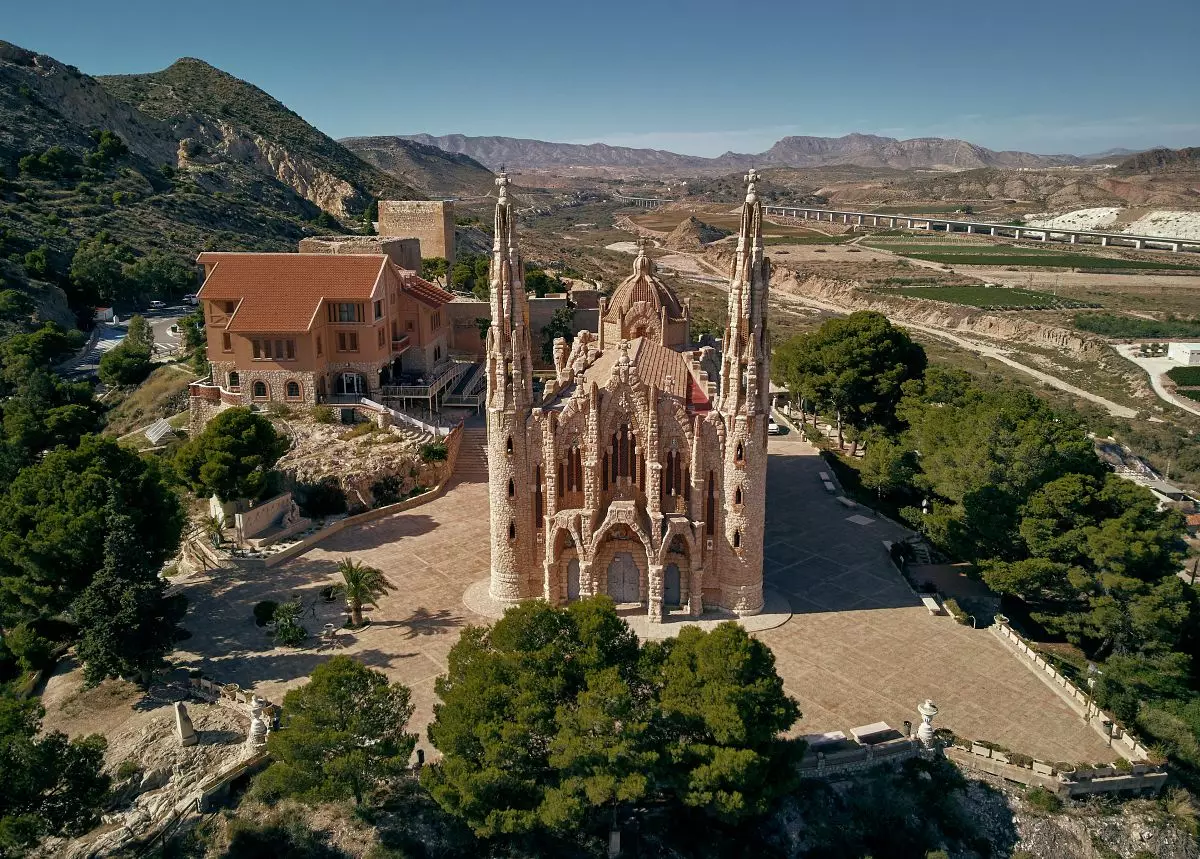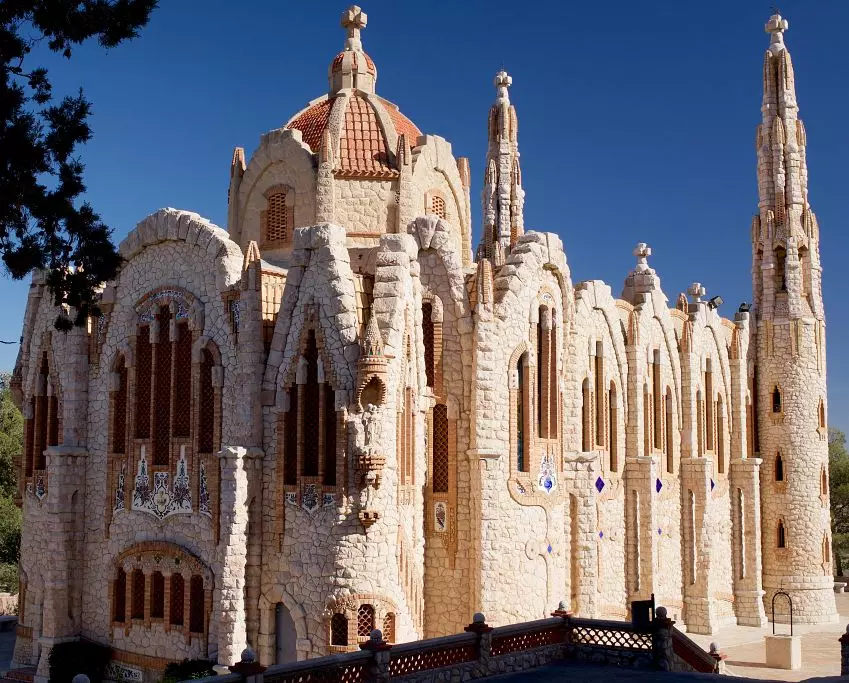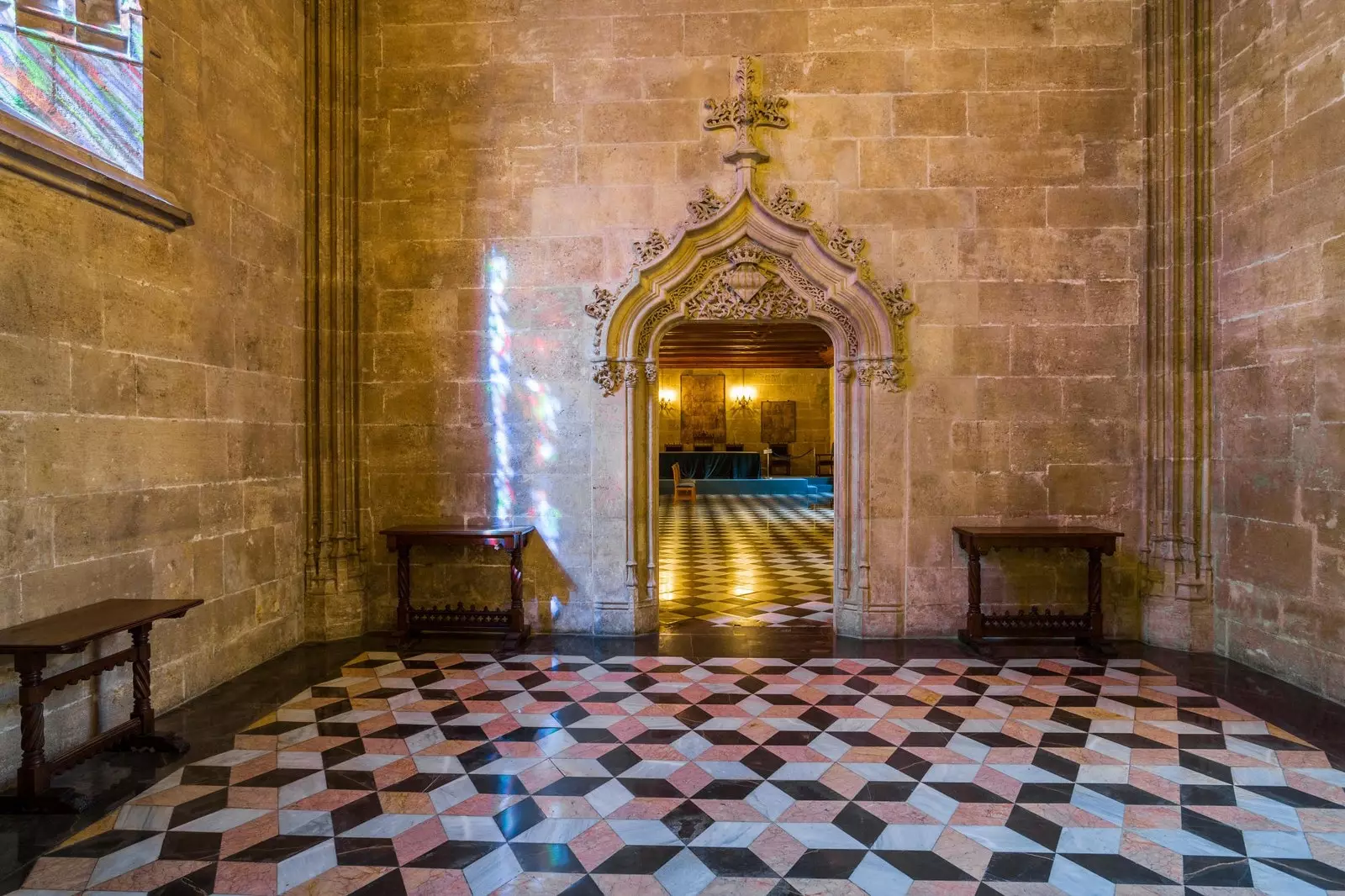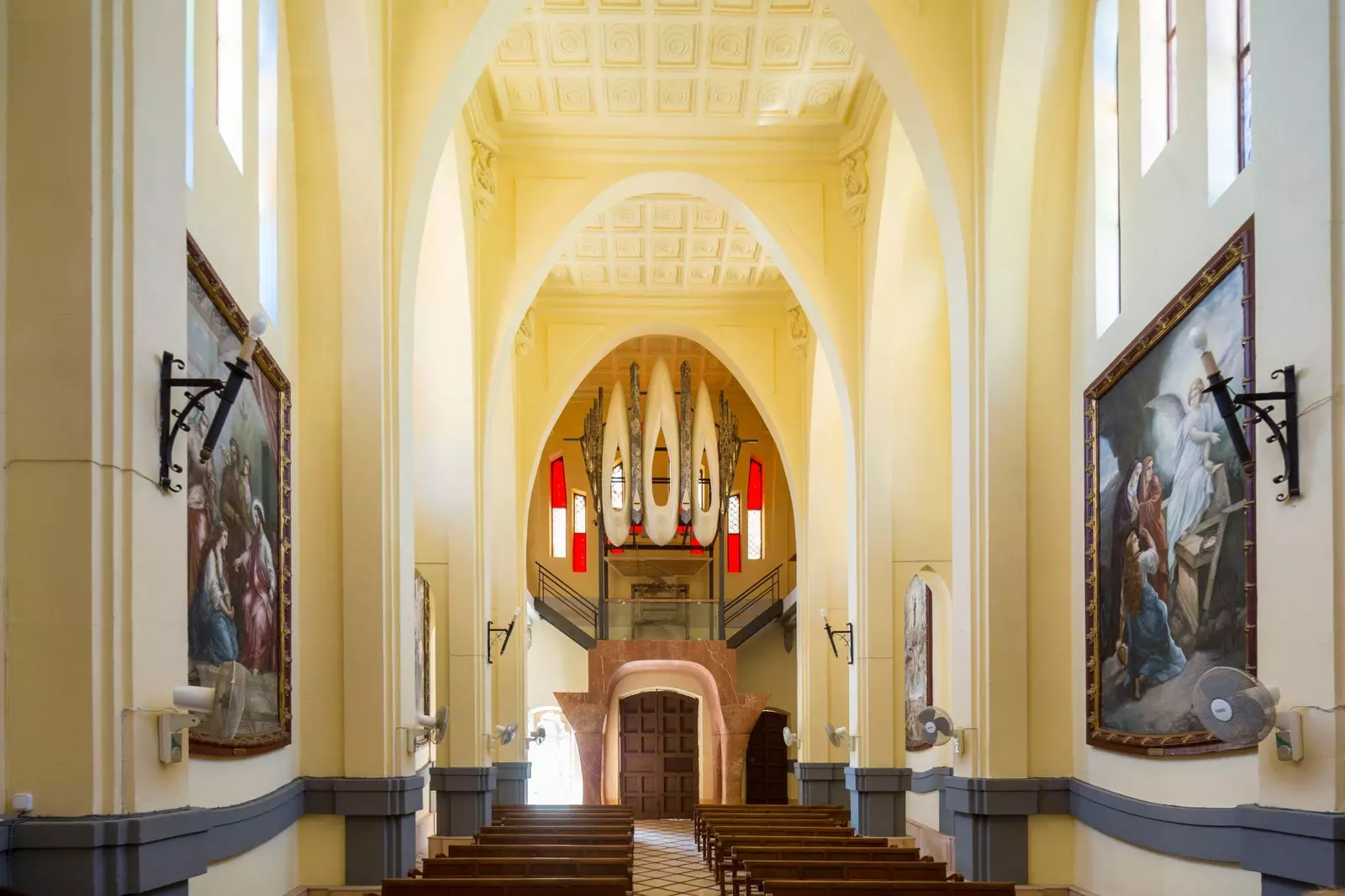in those long childhood summer walks with grandparents, in the middle of vine crops and eroded roads towers could be guessed. For me, who had already scratched up the VHS of Beauty and the Beast, that building that could be seen in the distance simulated a mirage, a kind of replica of those Disney movies in the middle of a valley of Alicante.

The other Holy Family.
Years later, and after visiting the Holy Family of my dear Barcelona, one connects the dots and recognizes those modernist pinnacles that transport one to childhood. And there, many years later, you ascend a hill on the outskirts of the city of Novelda surrounded by the riverbed. Vinalopó river until discovering the Sanctuary of Saint Mary Magdalene.
This small “Sagrada Familia” built at the beginning of the 20th century is not only one of the most curious places in the province of Alicante, but the best excuse to delve into the modernist fantasy that this corner of the Valencian province evokes.

modernist spirit.
AND MODERNISM SPREAD THROUGH LEVANTE
The renewal of the language of art has changed dumb throughout history depending on different factors. However, this transformation always came through wealthy families linked to an economic activity. It was like that the spell of modernism reached European countries, Spain included, at the end of the 19th century.
Modernism meant a break with established forms and a liberation in the form of curves, delicate structures and motifs typical of a plant world . A pattern applicable not only to architecture, but also to painting or literature.

Inside the Silk Exchange.
The great reference of modernism in Spain has always been Antonio Gaudi , but the influence of the Catalan master also penetrated other places such as the city of Valencia itself and its marvelous Silk market, or the Alicante cities of Alcoy and, in this case, Novelda.
At the beginning of the 20th century, Novelda experienced an important economic boom based on the production and commercialization of vinalopó vine, saffron export and the exploitation of natural stone. Aspects that strengthened the influence of rich families who were also looking for a reflection of their lavish legacy.
And the best example was the Sanctuary of Santa Maria Madgalena , a religious building located on a hill from which you can see a large part of the charms of the region of Medio Vinalopó.
The Sanctuary of Santa María Magdalena was conceived by the noveldense engineer José Sala Sala , who was inspired by Gaudí's modernist style for the work. Considered one of the most unique constructions of Valencian modernism, the building was built for almost thirty years, between 1918 and 1946.
The result is a work whose shape evokes a jug, in reference to the vessel that the Saint took to Jesus Christ as balm. Its two side towers have 25 meters high and culminate in a stone cross. A vertical dream made with decorative motifs based on pebbles from the Vinalopó River itself and bricks extracted from the reddish promontory where the sanctuary is located.

Inside the sanctuary.
The interior of the Sanctuary of Santa María Magdalena encompasses a rectangular central nave with the apse and the chapel of Santa Maria Magdalena , patron saint of Novelda. At the entrance, the project of an organ built only in marble , work of the artist Iván Larrea and the only organ in the world with these characteristics.
At the top of the hill the epochs are confused, as the nearby presence of the Mola Castle , built in the 12th century by the Almohads on an old Roman fortification. Today, your Three Corners Tower o Picos evokes an Arab fantasy that is unique throughout Europe.
The sum of its elements convert the sanctuary in an icon. In the starting point of a day to complement with a beer in the restaurant of the complex, a picnic on his drumsticks among the pines either hiking trails . But if you have fallen under the modernist spell, the best thing to do is make a visit to a historic center in Novelda where its historic complex included in the European Route of Modernism.
WINE CAN ALSO BE MODERNIST
The Sanctuary of Santa María Magdalena is the spearhead of Novelda's modernist charm, but this city contains many other architectural corners. The Modernist House Museum (Calle Mayor, 24) combines the eclectic with the modernist and was designed in 1901 by the architect Pedro Cerdán Martínez under the initiative of Antonia Navarro Mira, example of female empowerment at a time when women had no voice to build a house to their liking.
The museum house is made up of a ground floor and two floors where opulence exploits in all its forms: from its stained glass to upholstered vaults s and period furniture, as well as a courtyard dotted with white marble columns.
The Gomez-Tortosa Center , located next to the Casa Modernista, is another example of modernist splendor at the end of the 19th century, with its courtyard of columns and his tapestry hall Painted by Lorenzo Pericas. A fantasy to link with a visit from outside the house look , on San Vicente street, private. Finally, a special mention deserves the Novella Casino , opened in 1888.
The city of Novelda is lived in different ways but all its paths lead to a good Vinalopó wine. The ideal hook to approach the different crops and cellars where it is collected the Bagged Table Grape of Vinalopó , Protected Designation of Origin and famous for being the late grape that we all consume on New Year's Eve.
One of the best places to enjoy this tradition is House Caesilia , whose Heretat de Cesilia winery offers a tasting white, rosé and red to accompany the succulent menus of your restaurant.
And if you have time, you can always go into the The Marble Route or the Spice Route, identity symbols of this city whose history is understood in as many ways as fairy tales. Like mirages of childhood that we can always rediscover.
